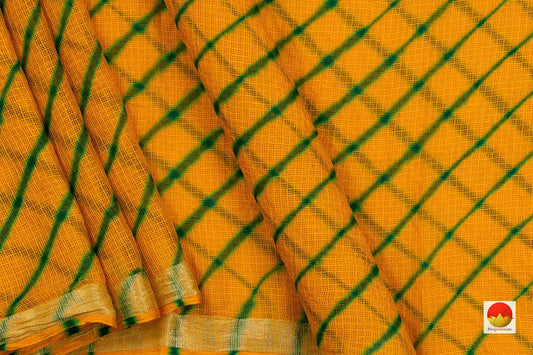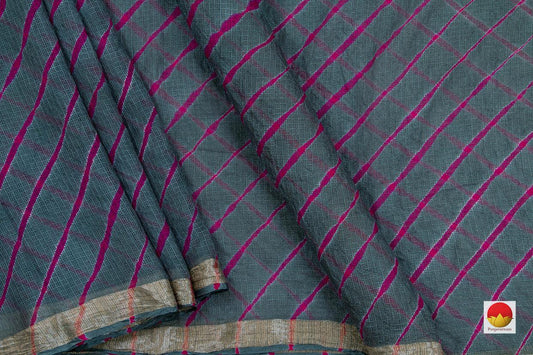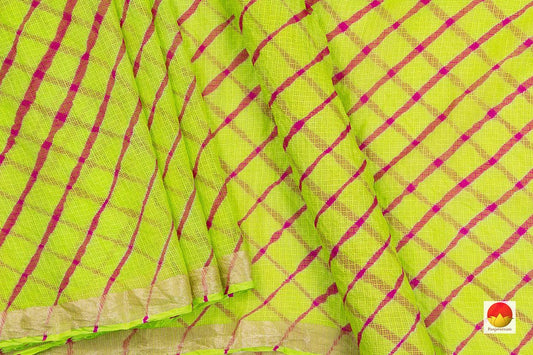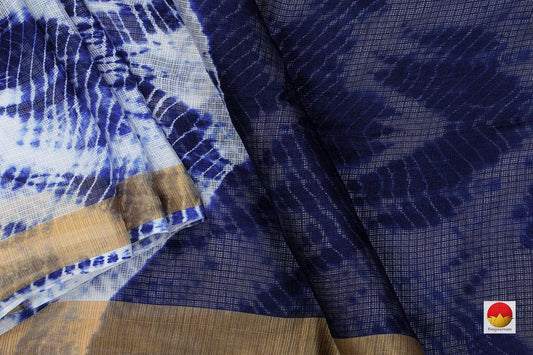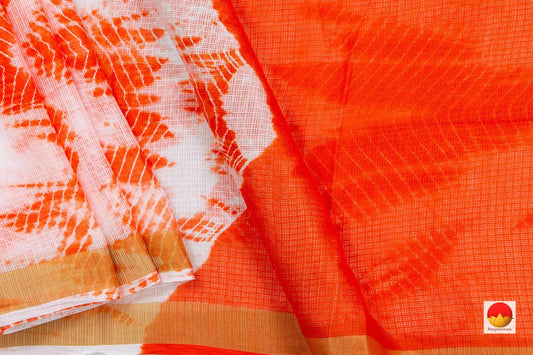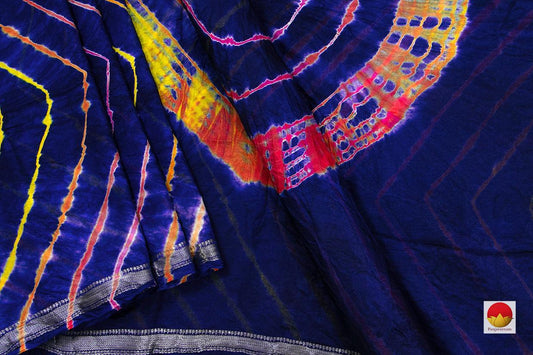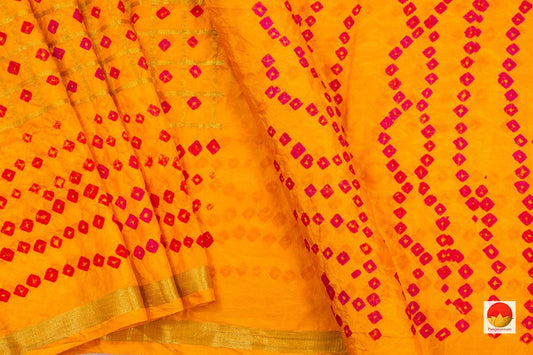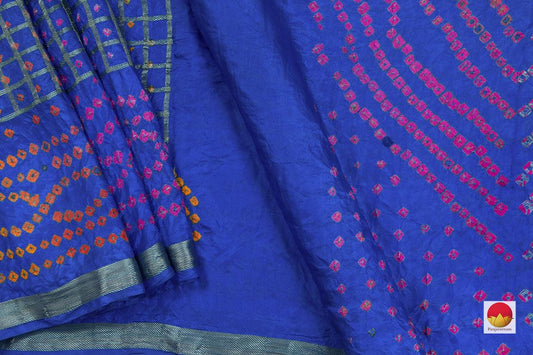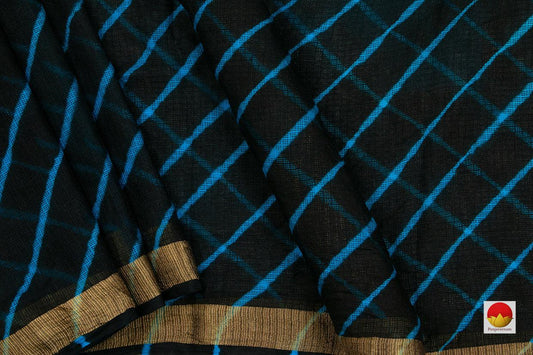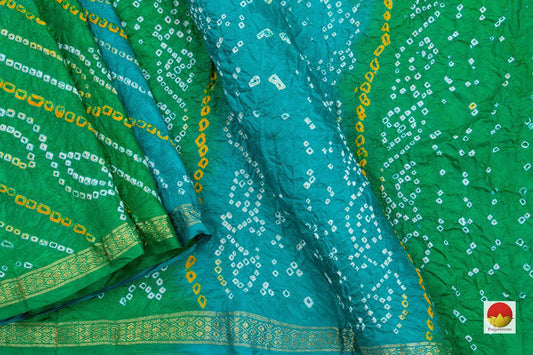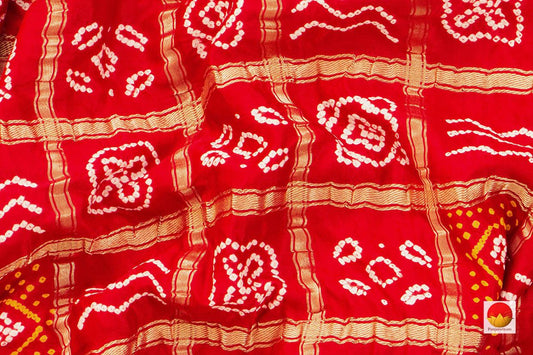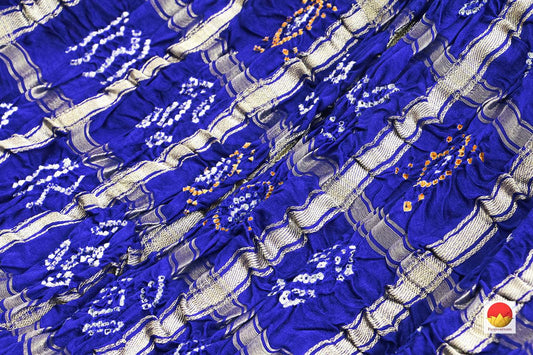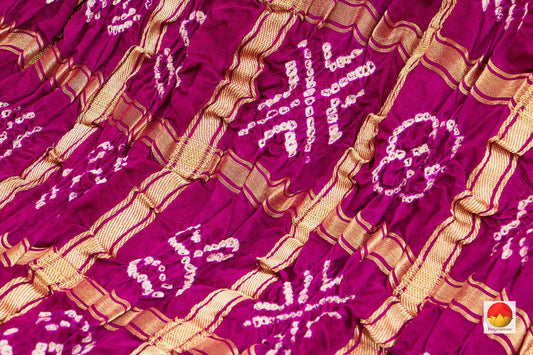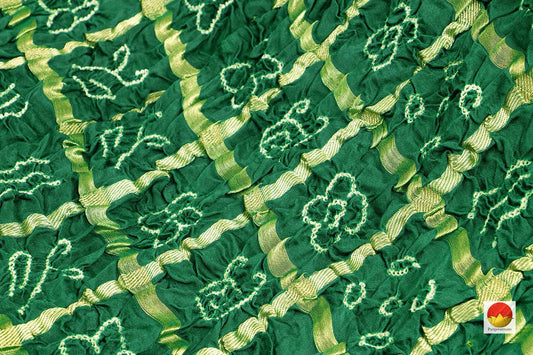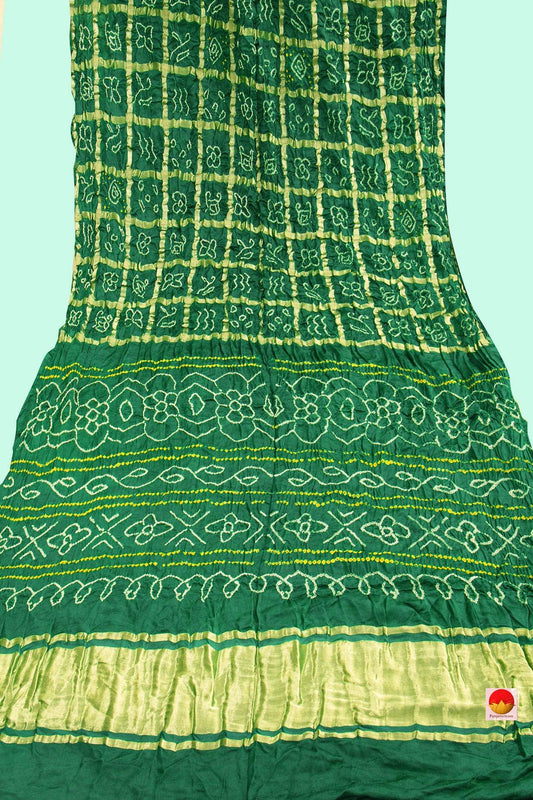Collection: Buy Bandhani Silk Sarees Online
-
Yellow Bandhani Lehariya Kota Silk Saree Handwoven PV RJ 28
Regular price Rs. 4,990.00Regular priceUnit price / perRs. 9,990.00Sale price Rs. 4,990.00Sale -
Grey Bandhani Lehariya Kota Silk Saree Handwoven PV RJ 29
Regular price Rs. 4,990.00Regular priceUnit price / perRs. 9,990.00Sale price Rs. 4,990.00Sale -
Green Bandhani Lehariya Kota Silk Saree Handwoven PV RJ 32
Regular price Rs. 4,990.00Regular priceUnit price / perRs. 9,990.00Sale price Rs. 4,990.00Sale -
Blue Bandhani Shibori Kota Silk Saree Handwoven For Office Wear PV RJ 35
Regular price Rs. 4,990.00Regular priceUnit price / perRs. 9,990.00Sale price Rs. 4,990.00Sale -
Orange Bandhani Shibori Kota Silk Saree Handwoven For Office Wear PV RJ 38
Regular price Rs. 4,990.00Regular priceUnit price / perRs. 9,990.00Sale price Rs. 4,990.00Sale -
Royal Blue Bandhani Lehariya Silk Saree Handwoven PV RJ 08
Regular price Rs. 4,990.00Regular priceUnit price / perRs. 8,990.00Sale price Rs. 4,990.00Sale -
Yellow Bandhani Silk Saree Handwoven PV RJ 15
Regular price Rs. 8,990.00Regular priceUnit price / perRs. 14,990.00Sale price Rs. 8,990.00Sale -
Blue Bandhani Silk Saree Handwoven PV RJ 18
Regular price Rs. 8,990.00Regular priceUnit price / perRs. 14,990.00Sale price Rs. 8,990.00Sale -
Black Bandhani Lehariya Kota Silk Saree Handwoven With Gold Zari Border For Party Wear PV RJ 39
Regular price Rs. 9,990.00Regular priceUnit price / per -
Sea Green Bandhani Silk Saree Handwoven PV RJ 14
Regular price Rs. 12,990.00Regular priceUnit price / perRs. 14,990.00Sale price Rs. 12,990.00Sale -
Red Gharchola Bandhani Silk Saree Handwoven Pure Silk PV KO 137
Regular price Rs. 18,900.00Regular priceUnit price / per -
Royal Blue Gharchola Bandhani Silk Saree Handwoven Pure Silk PV KO 139
Regular price Rs. 18,900.00Regular priceUnit price / per -
Pink Gharchola Bandhani Silk Saree Handwoven Pure Silk PV KO 140
Regular price Rs. 18,900.00Regular priceUnit price / per -
Green Gharchola Bandhani Silk Saree Handwoven Pure Silk PV KO 138
Regular price Rs. 18,900.00Regular priceUnit price / per
All You Need To Know About Bandhani Silk Sarees
History of Bandhani Silk Sarees
Roots and Legacy of Bandhani Silk Sarees
Historical texts provide evidence that the first Bandhani saree was worn during Bana Bhatt's Harshacharita, a royal marriage. It was once thought that a bride might have a bright future if she wore a Bandhani saree. For centuries, dyers have been experimented with various natural and artificial components. Experiments using various binding and tying methods are conducted to produce patterns on fabric submerged in dye containers. For ages, people in Africa, Japan, and India have used various kinds of tie-dye. During the Tang dynasty (618-906 A.D.) in China and the Nara period (552-794 A.D.) in Japan, tie-dye reached its peak development. The term (Bandhan), referring to tying up, is the root of the phrase Bandhani. Indian Tie & Dye, also known as Bandhani, originated about 5000 years ago.
Unique Features of Bandhani Silk Sarees:
Patterns in Bandhani Silk Sarees: A total of four Bandhani dots are often referred to as Chaubundi, seven as Satbundi, and one as Ek Dali or Bundi. Kodi is the name for teardrop-shaped dots, while boond is the name for small dots with darker centers. Three-group patterns or circles are referred to as Trikunti, four-group patterns are referred to as Chaubasi, and seven-group patterns are referred to as Satbandi. Bandhani dots and patterns are repeated to create intricate motifs and designs of leaves, flowers, trees, and human figurines.
Materials Used to Make Bandhani Silk Sarees: In general, artisans begin with white, unbleached fabric. Designs are fashioned in thick ropes using a Geru mixture, which is a blend of red and orange soil mixed with water. Stiff plastic sheet design patterns are common these days. Impermeable thick cotton strings are used to tie Bandhani and different environmentally friendly dyes are used to make Bandhani silk sarees.
Dyes Used in Bandhani Silk Sarees: Heavy-duty commercial dyes and dyestuffs can be used or not used at all in the handcrafted Bandhani process. In the beginning, Bandhani was made only with natural dyes like indigo or colors made from the roots, leaves, flowers, and vegetables of plants then artificial chemical colors were used to make Bandhani. These dyes are quicker and produce vibrant colors. Bandhini's are dyed nowadays using a mild mixture of synthetic and natural colors.
Styling Tips For Bandhani Silk Sarees
Weddings: In Gujarat and Rajasthan, Bandhani sarees are a popular choice for ladies to wear during the Haldi, mehndi, and sangeet festivities. To enhance the look, traditional jewellery and accessories are typically used with sarees.
Festivals: For occasions like Navratri, Diwali, and Holi, women traditionally dress in Bandhani sarees. To complete the festive look, women consistently pair bright, bold-colored sarees with traditional jewellery and accessories.
Religious ceremonies: In Gujarat and Rajasthan, women's cultural identities are reflected through the traditional Bandhani Saree. When participating in religious rituals like puja and yagna, women frequently wear the Bandhani Saree.
Formal events: Bandhani sarees are not only suitable for formal occasions but also social gatherings, corporate events, and office parties. For these kinds of events, women tend to choose soft colors in their sarees, which are then accessorized with gorgeous jewellery and accessories to finish the formal appearance.
Casual occasions: The Bandhani saree is a stylish or casual attire that may be customized even for casual occasions like shopping, lunch with friends, or family get-togethers, women frequently wear Bandhani sarees. Sometimes, the saree is accessorized with minimal jewellery and accessories to create a comfortable simple look.
Tips to Maintain Your Bandhani Saree:
- Hot water can cause the color of your saree to bleed and fade, so always wash it in cold water.
- When washing your saree, use a gentle detergent; stay away from chlorine and harsh chemicals as they might deteriorate the fabric and colors.
- Avoid soaking your saree for a long time as this can damage the fabric and fade the colors. Quickly and carefully wash your saree.
- Your saree gets damaged if you wring or twist it, because tie-dye is sensitive so use your hands to carefully press out any extra water.
- Keep your saree out of direct sunlight and hang it to dry in a shaded spot. The colors may deteriorate, and the cloth may get weaker in direct sunlight.
- A hot iron should not be used on your saree as this could harm the delicate tie-dye embroidery. To get rid of any wrinkles, use a steamer or a cool iron instead
Frequently Asked Questions
How do I buy Bandhan silk sarees online from Panjavarnam?
Browse Panjavarnam's website, choose and review the product details of your favorite Bandhani silk saree, and click "Buy It Now" to purchase online. You can contact customer care and request a video of the saree or schedule a video call appointment to view sarees. You can also visit the store in Mylapore, Chennai and physically see the saree before purchasing.
What makes a Bandhani saree from Panjavarnam special?
Bandhani silk sarees from Panjavarnam are authentic, handwoven in pure silk using the tie and dye technique. The designs are unique and only one saree is made in each design and designs dont get repeated. You can request a video call or ask for a video if the saree before deciding to purchase.The platform provides a seamless online shopping experience with easy exchange.
What makes the Bandhani saree unique?
The exclusive tie-and-dye designs on Bandhani sarees, made by talented artisans utilizing a traditional method, are what makes them exceptional. To create beautiful patterns, little portions of fabric are tied with thread and dipped in brilliant colors. The product is a stunning saree with a unique texture and pattern that is genuinely unique.
What accessories can be worn with the Bandhani saree?
The Bandhani saree is a very accessible and adaptable attire. It goes beautifully with traditional jewellery like gold or silver necklaces, bangles, and jhumkas. Choosing trendy jewellery, such as bold bracelets, rings, and earrings, will give your outfit a touch of modernity. The outfit can be finished with classic sandals.
What makeup goes well with a Bandhani saree?
For a balanced look, choose subtle makeup with nude or light pink lipstick, a touch of mascara, and a hint of kohl eyeliner.
How to maintain Bandhani Silk Sarees?
Bandhani sarees need to be meticulously rolled, ironed and kept. While ironing these sarees, simply use a steam iron. Only dry cleaning is recommended to preserve its color. Since these sarees are delicate, a high-quality saree-fall needs to be attached to them.
Customer Appreciation
Latest Bandhani Silk Sarees
| Saree Design | Price |
|---|---|
| Yellow Bandhani Silk Saree Handwoven PV RJ 15 | Rs. 8,990.00 |
| Royal Blue Bandhani Lehariya Silk Saree Handwoven PV RJ 08 | Rs. 4,990.00 |
| Red Gharchola Bandhani Silk Saree Handwoven Pure Silk PV KO 137 | Rs. 18,900.00 |
| Orange Bandhani Shibori Kota Silk Saree Handwoven For Office Wear PV RJ 38 | Rs. 4,990.00 |
| Green Gharchola Bandhani Silk Saree Handwoven Pure Silk PV KO 138 | Rs. 18,900.00 |
| Pink Gharchola Bandhani Silk Saree Handwoven Pure Silk PV KO 140 | Rs. 18,900.00 |
| Yellow Bandhani Lehariya Kota Silk Saree Handwoven PV RJ 28 | Rs. 4,990.00 |
| Grey Bandhani Lehariya Kota Silk Saree Handwoven PV RJ 29 | Rs. 4,990.00 |

